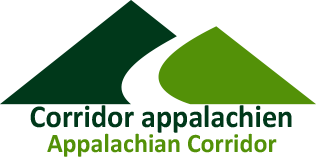26 Feb A Citizen Science Project Unfolding across Southern Québec
With the increased presence and simplified use of information technology, citizen science projects are gaining popularity around the world. Quebec is no exception and the Stop Carcasses! project allows everyone to collect and share valuable ecological data. Largely inspired by the WildPaths project of Cold Hollow to Canada in Vermont, Stop Carcasses! is now spreading in six Quebec regions: Eastern Townships, Laurentians, Outaouais, Centre-du-Québec, Bas-Saint-Laurent and Gaspésie. Overview of a project larger than life.
Budding biologists wanted
The Stop Carcasses! project is for adults and young people willing to learn more about wildlife and their habitats, and take part in the conservation of biodiversity. Several organizations in Quebec are interested in identifying ecological corridors and wildlife passages, though securing adequate funding to achieve large-scale data collection remains a challenge. The project therefore calls upon all citizens wishing to share their observations of animals (dead or alive) along the roads, in order to contribute to analyses of the impacts of road networks on wildlife and mitigation measures to reduce these impacts. Where are the road kill hotspots? Which species are most involved and when? The information shared by the virtual community on the iNaturalist platform will contribute to recommend safety improvement measures for both road users and wild animals. For example, the data could identify the best locations for the planning or construction of safe wildlife crossings.
Six active regions
The first Stop Carcasses! project was born in the Eastern Townships, following on the footsteps of WildPaths in Vermont. The Stop Carcasses! project was created by the Ruiter Valley Land Trust (as part of its Faune sans frontières program, with technical assistance from Appalachian Corridor and financial support from the Fondation de la faune du Québec. Inspired by this project, the organization Éco-corridors laurentiens replicated this model in the Laurentians region of Quebec, north of the Saint-Lawrence. Subsequently, as part of the Ecological Corridors project, the Nature Conservancy of Canada created Stop Carcasses! platforms for the Outaouais, Gaspésie, Centre-du-Québec and Bas-Saint-Laurent. The latter two are managed respectively by the Conseil régional de l’environnement du Centre-du-Québec and Horizon-Nature Bas-Saint-Laurent. More citizens than ever can participate in this major project from now on.
How to participate?
On foot, by bike, by car: you see a dead animal on the roadside or live one crossing a road? Share your observations in one of the six areas covered by the Stop Carcasses! project on the iNaturalist platform (www.inaturalist.ca/projects/stop-carcasses) using your smartphone or computer. The iNaturalist app is free and available on iPhone and Android devices.
SAFETY FIRST! Your safety and that of other road users is the #1 priority! Never stop your vehicle on a highway or on a busy road. On secondary roads and municipal networks, make sure that temporarily stopping your vehicle in the shoulder does not put anyone in danger. Be very visible and ideally wear a reflective vest.
In addition to Stop Carcasses!, the RVLT organizes training sessions for citizens wishing to become more involved and contribute regularly to ecological research projects. Tracking is a proven method for identifying places where wildlife goes, where it moves and crosses inhospitable environments. This approach also helps to document avoidance behaviors when approaching roads or obstacles to wildlife movement.
Going further
- Are you interested in becoming a tracker? Visit www.facebook.com/ValleeRuiter/ and the Pistage Québec project on the iNaturalist.ca platform
The various Stop Carcasses! initiatives across the province are part of the larger project “Ecological corridors: A climate change adaptation strategy” coordinated by the Nature Conservancy of Canada in Quebec and its many partners. This project is made possible thanks to the financial contribution of the Government of Quebec, as part of the 2013-2020 Action Plan on Climate Change, funded by the “Fonds vert” (Green Fund).

Volunteer taking a photo of a crushed amphibian on the road, with car keys for scale. Photo credit: Sinton Edwards

